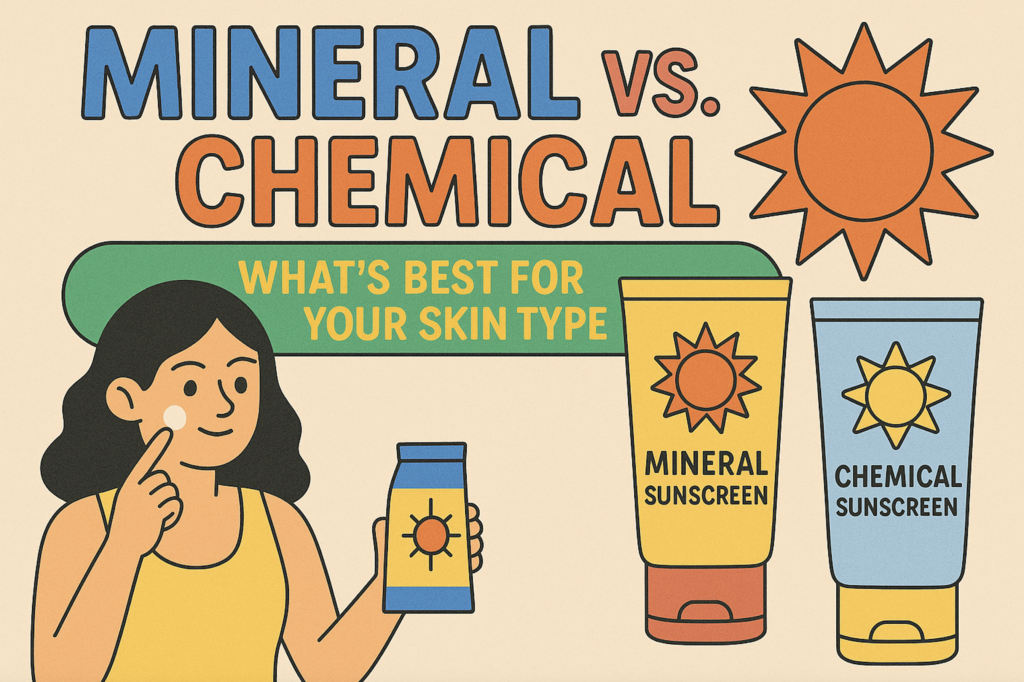Sunscreen is essential for protecting your skin from UV damage—but not all sunscreens are created equal. There are two main types: mineral (physical) and chemical. Each has pros and cons depending on your skin type, lifestyle, and preferences. Here’s how to choose the right one for safe, effective sun protection.
☀️ What’s the Difference?
Mineral Sunscreen: Uses zinc oxide or titanium dioxide to sit on the skin and reflect UV rays
Chemical Sunscreen: Uses ingredients like oxybenzone or avobenzone that absorb UV rays and convert them into heat
✅ Pros and Cons of Mineral Sunscreen
Pros:
- Gentle on sensitive skin
- Starts working immediately
- Better for acne-prone and rosacea-prone skin
- Safer for coral reefs
Cons:
- Can leave a white cast
- May feel thicker or heavier on the skin
✅ Pros and Cons of Chemical Sunscreen
Pros:
- Lightweight, blends easily
- Often better for sports or water resistance
Cons:
- Can irritate sensitive skin or eyes
- Takes 15–30 minutes to become effective
- Some ingredients may disrupt hormones or trigger allergies
🧴 Best for Each Skin Type
- Sensitive Skin: Mineral sunscreen (fragrance-free formulas)
- Oily or Acne-Prone Skin: Mineral or non-comedogenic chemical options
- Dry Skin: Chemical sunscreen with added moisturizers
- Children or Babies: Mineral sunscreens are safest
🏖️ How to Use Sunscreen Effectively
- Apply 15 minutes before sun exposure (chemical) or right before (mineral)
- Use at least SPF 30 and reapply every 2 hours, especially after swimming or sweating
- Don’t forget ears, neck, and tops of feet!
Both mineral and chemical sunscreens have their place—it all depends on your skin needs and lifestyle. For sensitive or eco-conscious users, mineral sunscreen is a great choice. For high-intensity activities or dry skin, certain chemical options may work better. The key is to use it consistently and correctly.
